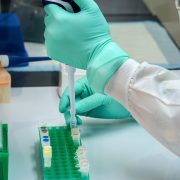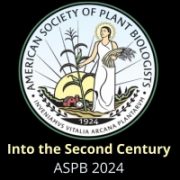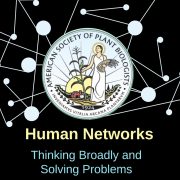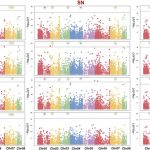Serving and SURFing at ASPB: Reflections on 35 years with ASPB
Guest post by Jonathan Monroe
ASPB has been a big part of my professional life since I first joined in about 1984 as a graduate student at Cornell. One early memory of attending ASPP (former name) meetings was making posters by spray-mounting printed paper onto colored cardboard and trimming the edges so there were as few distractions as possible. I also recall being astounded when we learned how to send electronic messages from computer to computer – from home! Those were the days of Zenith amber screens and no graphics… Back then I had no idea how my career would unfold or that ASPB would play an important role in that career for the next 35 years.
Moving from grad school to postdoc to assistant professor, I looked forward to the ASP(P)B meetings each summer as a way to keep up with the friends I had collected at each stop along the way. Soon after landing at James Madison University, a Primarily Undergraduate Institution (PUI) where the teaching load is high and there are no other plant physiologists to talk to, I began to realize that ASPB meetings were actually a lifeline – a way to stay in touch with the plant biology community. Not only are there people who care about what I do, but there are other PUI faculty that are in the same boat, and use the annual meeting for similar reasons.
One of the highlights of each meeting is the PUI gathering where PUI faculty can meet, talk, share, and support each other. For many years, this event was held in the morning after the annual mixer, but it was fun despite the early hour. The PUI gathering has grown and shifted both in focus (and in timing), but at those early breakfasts, despite being a young and inexperienced assistant professor, I was among friends and could speak up and exercise my budding leadership wings. I wasn’t aware that I even had those wing buds then, but ASPB provided a safe environment for professional development and has continued to do so as I have moved through my various career stages. This is an unexpected and powerful benefit of being an active member of the Society. Developing leadership skills takes time and practice, and doing that in a supportive, lower-stakes environment – compared with the keep-your-head-down-on-route-to-tenure environment at home – can be huge. As it so often happens, once anyone expresses any leadership potential, one starts getting put to work! However, whereas serving on committees at one’s institution is not always a rewarding experience, serving ASPB has been a joy, and it has allowed me to say ‘no thanks’ to serving on local committees that didn’t interest me. Having served on the Executive Committee twice and as Treasurer and on the Board of Trustees, I appear to have given a lot to the organization, but I know that it has given so much more to me.
About 20 years ago while serving as the representative to the Executive Committee from the Mid-Atlantic Section, I began to understand how the organization worked and how one could take an idea and run with it. My good friend Mark Brodl and I hatched a plan to start a program to fund undergraduate research students over the summer. We realized that with funding being scarce, there were limited opportunities for undergraduates to get summer research opportunities and that getting undergraduates in plant biology labs early in their career was the best way to inspire them to look beyond a career in health care. It is now called the ASPB SURF (Summer Undergraduate Research Fellowships) program and it is in its 18th year! To see that the Society enthusiastically supports this program is a true joy. It is also a pleasure to meet the enthusiastic students who receive these fellowships.
In the last decade or so, my research interests shifted into the realm of protein structure and function. I think about the roles of individual amino acids in a protein’s function and not just the roles of that protein in the plant. As a result, I have now attended several meetings of the American Society of Biochemistry and Molecular Biology, which, being part of Experimental Biology, are much larger meetings and more diverse in terms of research areas. It is good to experience other meetings, if only to gain an appreciation for what we have at ASPB – a tight-knit, supportive community focused on a common cause, but functioning as an umbrella for a variety of diverse subgroups that all thrive together.
 Author: Jonathan Monroe, Professor of Biology, James Madison University, [email protected]
Author: Jonathan Monroe, Professor of Biology, James Madison University, [email protected]










Leave a Reply
Want to join the discussion?Feel free to contribute!